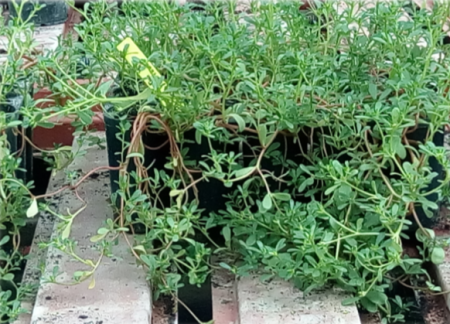
Objective:
Purslane is known for her gastronomic and medicinal excellences effects. It is considered a miraculous plant with healing properties (Hwess.H et al., 2017). It is very used in traditional medicine, but not well exploited in the pharmaceutical industry. In order to raise awareness also on this wild plant, we have decided to compare many provenances of puslane, using maceration extraction.
Context:
Purslane is a cosmopolitan herb. It belongs to the family of Portulacacea. This plant grows mainly in North Africa, Middle East, South Asia Europe, America and Australia. It is used as vegetable or spice, raw or cooked. It has various medicinal uses and it is employed mainly as natural remedies for headache, bowel diseases, cardiovascular diseases (Uddin M. K. et al., 2014) and burn treatment. To determinate the best biological activity, various parameters were compared between different Tunisian provenances.
Contacts:
Ahouas Hayfa, Saloua Sadok, Lamia Hamrouni
E-mail : hwess-hayfa@hotmail.fr
Further information:
Hwess H., Ayadi R., Mahouwachi W., Rizgui M., Hamrouni L.,2017. Notes ethnobotanique et ethnopharmacologique sur Portulaca oleracea (L.)
Wenzel G.E., Fontana J.D., Correa J.B.C., 1990. The viscous mucilage from the weed Portulaca oleracea L. Appl. Biochem. Biotechnol. (24/25), 341–353.
Yadegari M., 2018. Performance of purslane (Portulaca oleracea) in nickel and cadmium contaminated soil as a heavy metals-removing crop'. Iranian Journal of Plant Physiology 8 (3), 2447-2455.